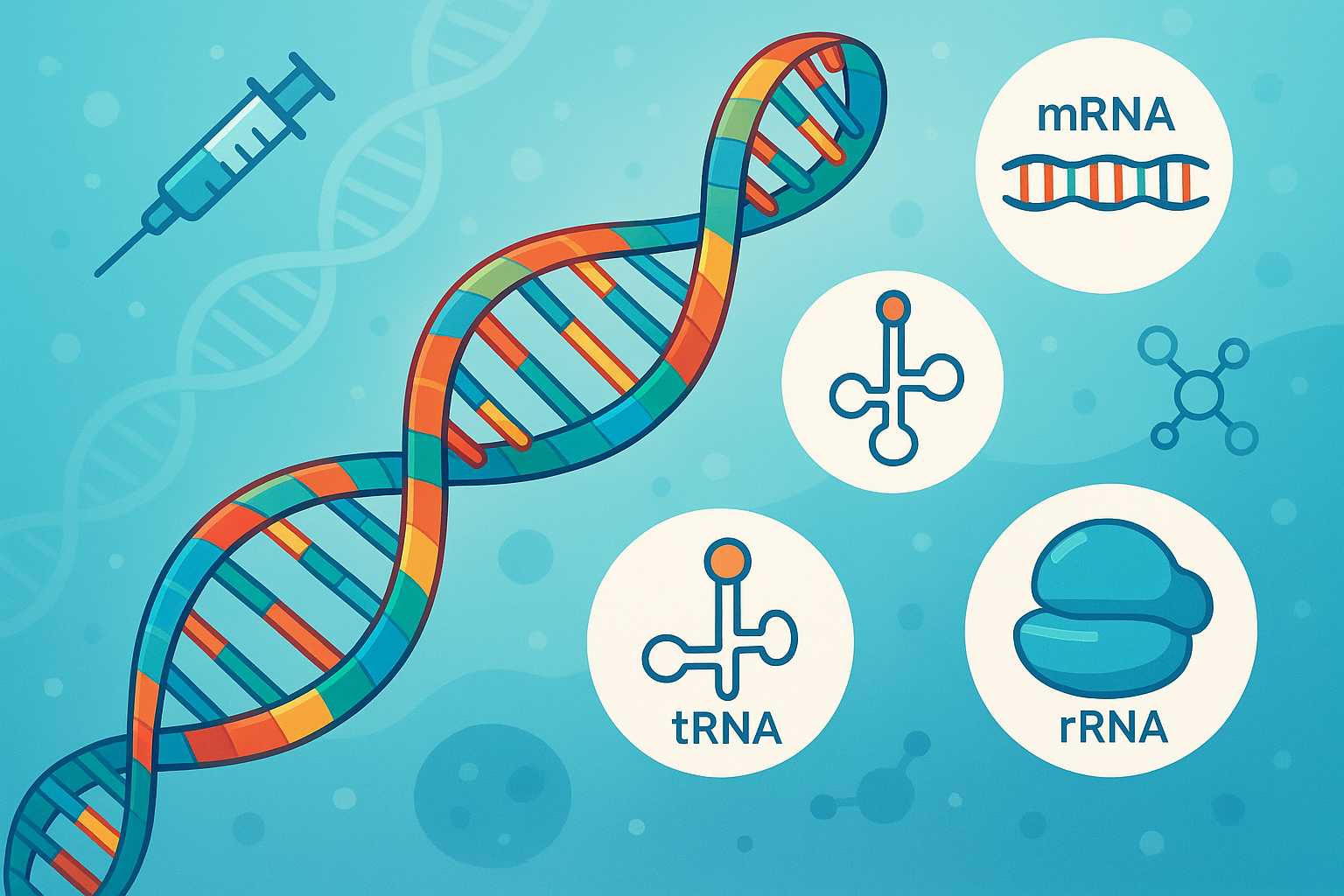When it comes to the molecules that run the show in our cells, DNA tends to steal the spotlight. But there’s another key player that’s just as essential—RNA. Although once thought to be just a passive messenger, RNA (ribonucleic acid) is now recognized as a dynamic force in biology, with roles that extend far beyond the textbook definition.
Understanding RNA
RNA is quite similar to DNA, with a few critical differences in structure and function. While DNA holds our genetic blueprint in the famous double helix, RNA is usually single-stranded and comes in several varieties, each with specialized roles. Its backbone contains ribose sugar instead of the deoxyribose found in DNA, and it uses the base uracil in place of thymine.
The Classic Role: Messenger RNA
Most biology textbooks introduce RNA as messenger RNA (mRNA), which acts as the courier, carrying genetic instructions from DNA in the nucleus to ribosomes in the cell’s cytoplasm. There, those instructions are used to build proteins—the true workhorses of cells.
But messenger RNA is just one of many types. Ribosomal RNA (rRNA) makes up the core structure of ribosomes, the protein factories themselves. Meanwhile, transfer RNA (tRNA) ferries amino acids to the ribosome to assemble them into proteins.
RNA’s Expanding Universe
For decades, the story seemed simple: DNA makes RNA, RNA makes protein. However, recent discoveries have shown that RNA is involved in far more complex processes. Small regulatory RNAs, like microRNA (miRNA) and small interfering RNA (siRNA), can silence or regulate gene expression, effectively turning genes off or on without altering the DNA sequence. This regulation is essential for development, disease prevention, and cellular responses to stress.
Moreover, long non-coding RNAs (lncRNAs) have been found to play roles in chromosome structure, gene regulation, and even controlling the activity of enzymes. Some viruses, such as the flu and coronavirus, even use RNA as their genetic material, proving that RNA can store information just like DNA.
The Cutting Edge: RNA in Medicine and Technology
The importance of RNA is not just academic. mRNA vaccines, such as those used in response to COVID-19, have showcased how synthetic RNA can be harnessed to trigger immune defenses, potentially revolutionizing vaccine development and disease treatment.
RNA’s ability to regulate genes and carry instructions makes it an exciting target for therapies that could treat genetic diseases, viruses, and cancer. Scientists are exploring RNA interference (RNAi) as a method to "silence" harmful genes, representing a powerful new toolkit in molecular medicine.
Conclusion
Once overshadowed by DNA, RNA is now recognized as a molecular multitasker and a driver of biological complexity. Continued research into RNA promises not only to deepen our understanding of life at the molecular level but also to unlock new strategies in medicine and biotechnology. Next time you think about the molecules of life, give RNA the credit it deserves—for its silent, yet essential, role in shaping every living cell.
—Carl


Leave a Reply